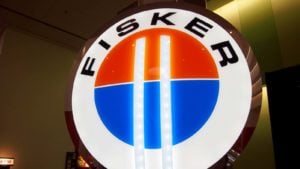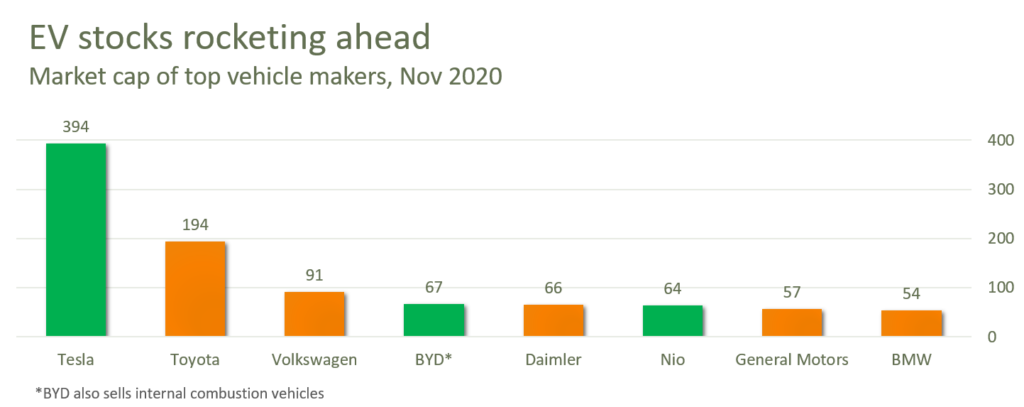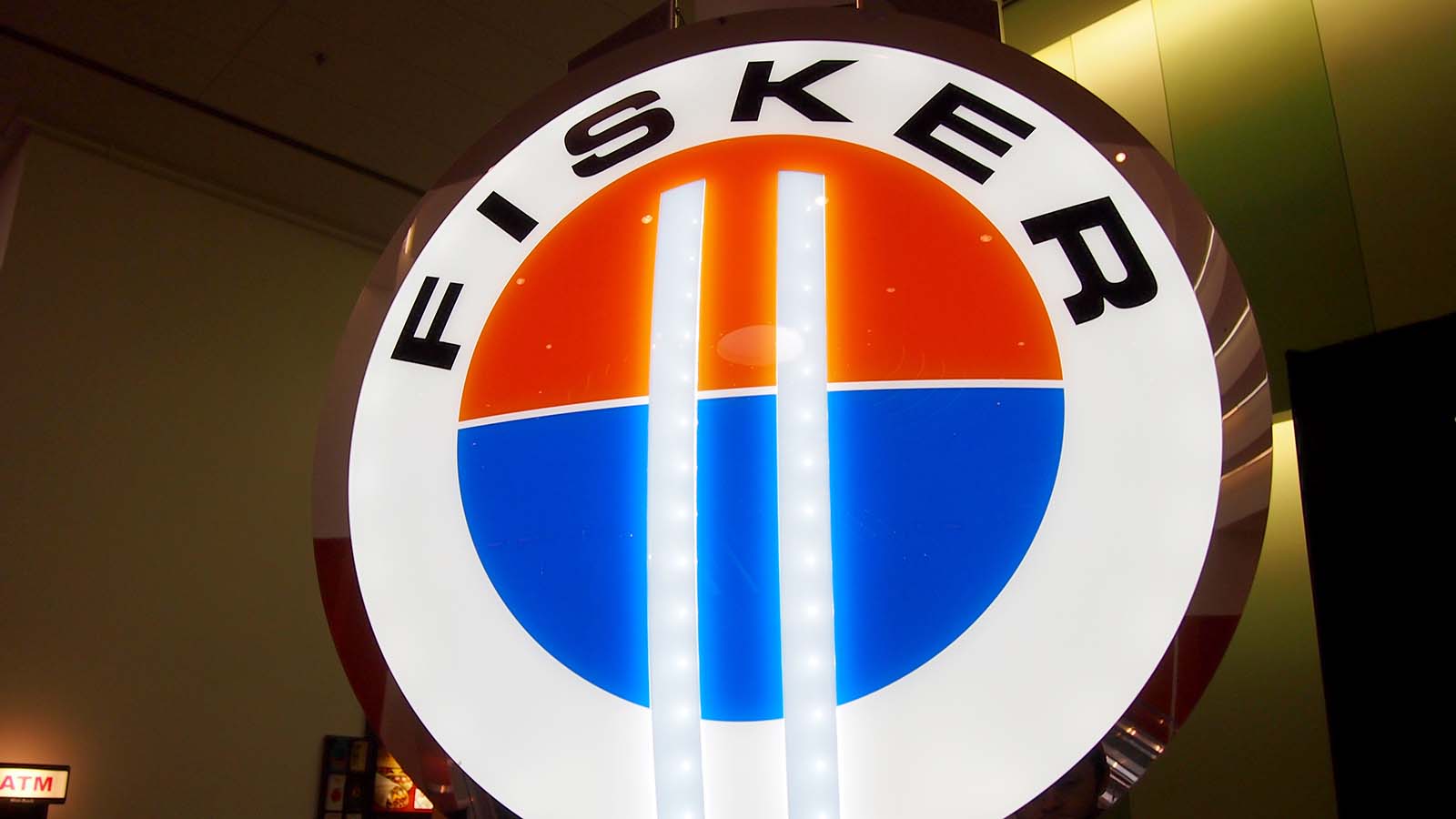For months, electric vehicle (EV) investors have eagerly anticipated the special acquisition company (SPAC) listing of Fisker (NYSE:FSR), a clean-auto company founded by famed car designer Henrik Fisker. Now those investors have been well-rewarded — FSR stock has already risen over 65% since its went public on Oct. 30.

However, those who haven’t fallen into the EV craze might shrug, seeing the latest frenzy of unprofitable, often zero-revenue SPAC listings as yet another round of Wall Street mania.
But don’t let the volatile prices turn you off from the industry. Some EV companies will succeed, even as many fail. With its cast of experienced managers and marketers, Fisker is in a stronger position than most to pull ahead.
So, don’t bet against FSR stock just yet. Here’s why shares could blow short-sellers out of the water.
FSR Stock Is a Diamond in the Rough
FSR stock has arrived on the market just as EVs are reaching unprecedented popularity. Even companies like Faraday Future and Canoo don’t need to show success — or have particularly promising ideas — in order to nab funding.
Of course, this mania has rippled across financial markets. Tesla (NASDAQ:TSLA) is now worth as much as the top-five carmakers combined (see the chart below). Even Nio (NYSE:NIO) — a Chinese EV startup — is now worth more than General Motors (NYSE:GM). It produces just a fraction of the legacy carmaker’s output.

These are numbers that should make any long-term investor squirm. Throwing billions of dollars at unprofitable companies distorts the markets and makes it hard to tell successful companies like Amazon (NASDAQ:AMZN) apart from future failures like Pets.com.
However — among the EV frenzy — one electric vehicle company stands out from the crowd: Fisker.
A Different Business Model
It’s easy to forget that Tesla once had a strong EV competitor back in the day. The Wall Street Journal writes:
“Roughly a decade ago the man who made a name for himself designing sports cars for Aston Martin and BMW was neck and neck alongside Tesla in a battle to capture the public’s imagination for high-end electrified luxury cars.”
Back then, Fisker’s flagship car — the Karma — cost over $100,000 and attracted the likes of Leonardo DiCaprio as well as former U.S. Vice President Al Gore.
Unfortunately, though, the first Fisker company collapsed in 2013 after its battery maker forced a national recall. The setback proved too great for the fledgling company, sending it into receivership.
This time, however, Fisker seems determined to avoid making the same mistakes. For one, his new company will outsource manufacturing to experienced third party suppliers — FSR just partnered with Magna for its car production. The firm will also kick off its sales with SUVs, a less flashy but far broader market than high-end sports cars.
That opens the door for swift ramp-up. Now the company believes it can sell 225,000 units and generate $13.2 billion in revenue by 2025 (Page 29). Though these estimates are likely too optimistic, Fisker will still deliver cars far faster than most expect. Needless to say, that’s a promising prospect for FSR stock.
What About the Hype?
As I’ve written in articles before, though, Fisker still faces a lot of unknowns.
Firstly, the company’s novel financing program — which allows drivers to lease cars directly — could become a financial sinkhole on its balance sheet. Ford (NYSE:F) runs a similar program at Ford Credit which has caused recurring headaches for the legacy automaker.
Secondly, Fisker will need spectacular marketing to push its SUVs out the door. A decade ago, the Karma “captured imaginations” with its sleek design. Today, the clunkier Fisker Ocean looks more like a cross between a Range Rover and a Lexus RX. It’s attractive, but Fisker will need to pull out all the stops in order to rise above an increasingly crowded electric SUV market.
Finally, Fisker is still a startup — it has got a long way to climb. The company currently generates zero revenues. Like Tesla, it will also have to build out its own sales network of showrooms.
So, the challenges are immense. Don’t take it personally if FSR stock trips before it’s out the door — some research says that “three-quarters of venture-backed firms” inevitably fail. But — if the company does pull off its start in the EV market — investors stand to win big.
Where Will Fisker Go from Here?
On a day-to-day basis, FSR stock will continue to respond hyperactively to any news, whether positive or negative. As such, the company has become a haven for day-trading enthusiasts.
In November, FSR stock saw an average of 18.3 million traded shares on its 100 million free float. Put another way, traders turn over 100% of FSR’s tradable share base every week.
Likewise, the standard deviation for FSR’s daily return has consequently hovered around 6.3% since August, compared to 6.1% for Nio and 2.5% for Bitcoin. That has left traditional stock analysts wagging tongues over price swings that make “no sense.” So, Fisker is a relatively attractive day trader’s gambit.
Now — putting day trading aside — FSR stock should perform well in the short term as investors looking beyond the pandemic start to rotate into cyclical stocks.
In the long run, Fisker’s success depends entirely on its ability to win over customers. If the company hits its lofty targets of $13.2 billion revenue and $1.9 billion free cash flow by 2025, shares are worth $52 today, according to a 2-stage DCF model. That’s a great 270% upside. However, if it fails to break into the SUV market, it’s unlikely that investors will see much of their capital returned.
FSR stock’s fair value likely rests somewhere in between these wide goalposts. Cowen analyst Jeffrey Osborne puts a $22 target price on the company. That might still be too low — the company is worth just $3 billion today and has a $1 billion cash arsenal to build out marketing and distribution. Instead, shares are probably worth closer to $40, a 200% upside.
Henrik Fisker might not be a natural marketer — at least in the way that Tesla CEO Elon Musk is. But investors shouldn’t forget that Fisker’s knack for car design once gave Tesla a run for its money.
However, investors should still beware — it won’t be a straight shot to success. Fisker, for instance, is no stranger to controversy and bad press. He has a history of questionable marketing efforts. What’s more, his choice of CFO — Geeta Fisker, his wife — smacks of favoritism.
For now, though, short-sellers should put away their checkbooks. If Fisker has his way, FSR stock still has a lot of room to run.
On the date of publication, Tom Yeung did not have (either directly or indirectly) any positions in the securities mentioned in this article.
Tom Yeung, CFA, is a registered investment advisor on a mission to bring simplicity to the world of investing.
